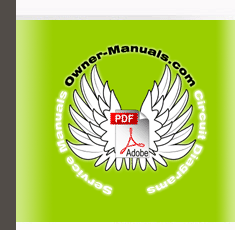|
|
|
Categories
|
|
Information
|
|
Featured Product
|
|
|
 |
|
|
There are currently no product reviews.
 ;
Very good copy, very readable and easy transaction as always.
 ;
It is perfect, exactly what we needed. It's like the paper version but less clutter.
 ;
Received my manual within 24 hours. Very clear scan of the manual I needed. Thanks!
 ;
Very clear scan, I recommend it. Definitely a must have for any 3362 owner.
Alpine could have written a slightly more complete manual, though. It's already pretty huge, but the unit has so many functions, I feel some more explanation would have been better.
Yamaha's manual of their comparable YDSP-1 is a little better in my opinion.
 ;
Immediate response with excellent service - highly reccommended
5. Clean the outer and inner glass using hot soapy water or Flash Cream cleaner. DO NOT try to clean the aluminium foil which is inside the door. The foil is there to help keep the door cool, if it is damaged it will not work. Ensure that all parts are well rinsed and thoroughly dry before attempting to replace the outer door glass. TO REPLACE THE OUTER GLASS 1. Holding the oven glass with both hands, gently place the locators into the holes of the brackets at the bottom of the oven door. 2. Push the top of the oven glass towards the oven door ensuring the screw location holes line up. 3. Hold the glass in place at the top of the door. Still holding the glass, carefully open the door and insert the cross head screw into the location holes. Give the screws one turn to ensure the glass is secure. 4. Tighten the screws positively with the Pozidrive screwdriver before closing the oven door. DO NOT attempt to use the oven without the glass being in place.
l l
Follow the recommendations below to keep oven soilage to a minimum. Cook at the recommended temperatures. Higher temperatures during roasting will increase soilage. Try cooking at lower temperatures for an increased length of time, you will save energy and often the joint is more tender. Use minimal, if any, extra oil or fat when roasting meat; potatoes only require brushing with fat before cooking. Extra fat in the oven during roasting will increase splashing and soilage. It is not necessary to add water to the meat tin when roasting. The water and the fat juices from the joint create excessive splattering during cooking even at normal temperatures as well as causing condensation. Covering joints during cooking will also prevent splashing onto the interior surfaces; removing the covering for the last 20-30 minutes will allow extra browning, if required. Some large joints and turkeys especially benefit by this method of cooking, allowing the joint to cook through before the outside is overbrowned.
l
l
l
CARE OF STAYCLEAN SURFACES
Stayclean surfaces destroy splashes of food and fats when the oven temperature is raised to around 220°C. It is a good idea to run the oven for an hour or two per week to ensure continued good performance from the Stayclean finish.
HINTS AND TIPS
l
Manual cleaning of Stayclean is not recommended. Damage will occur if oven sprays or abrasives of any kind are used.
l l
Slight discolouration and polishing of the Stayclean surface may occur in time. This does not affect the Stayclean properties in any way. A good time to allow the oven to run on is after the weekly roast. After removing the roast, turn the oven up to 220°C and allow to run for an hour or so. It is important not to allow a build-up of soilage as this can prevent the Stayclean from working.
31
|
|
 |
> |
|
